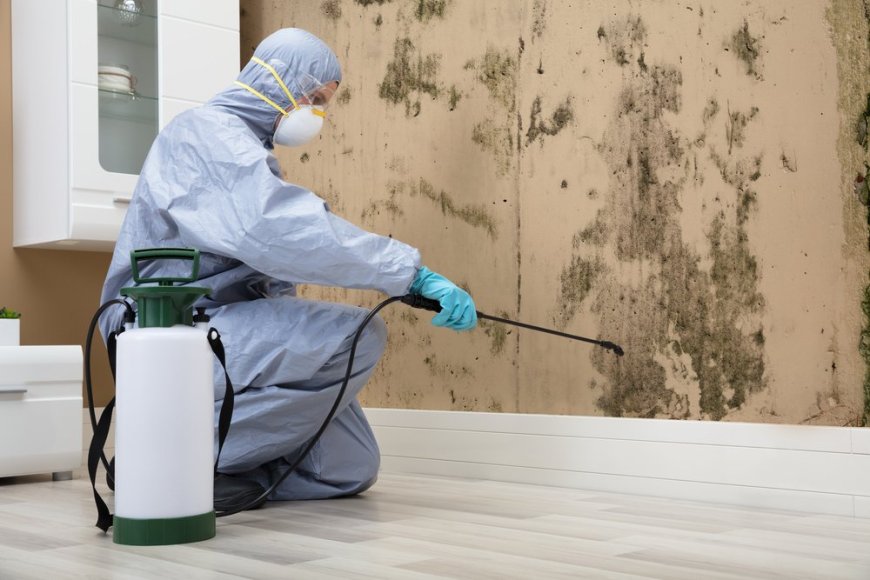Radon Levels: How to Monitor Them Over Time

Radon, an invisible and odorless radioactive gas, is a significant health risk that can silently infiltrate homes from the ground. It is the second leading cause of lung cancer after smoking. To effectively manage and mitigate radon risks, it is crucial to monitor radon levels over time. This article provides a detailed guide on how to monitor radon levels consistently, the methods and tools available, and the steps you can take to ensure a safe living environment.
Understanding Radon and Its Risks
1. What is Radon?
Radon is a byproduct of the natural decay of uranium in soil, rock, and water. It is a radioactive gas that can accumulate in buildings, particularly in lower levels such as basements and crawl spaces. When radon is inhaled, it can damage lung tissues, increasing the risk of lung cancer.
2. Health Risks Associated with Radon:
- Lung Cancer: Radon exposure is the second leading cause of lung cancer. Long-term exposure to high radon levels significantly increases the risk, particularly for smokers.
- Radon Progeny: Radon decays into radioactive particles known as radon progeny. These particles can attach to airborne dust and be inhaled, causing additional damage to lung tissues.
The Importance of Monitoring Radon Levels Over Time
1. Fluctuations in Radon Levels:
- Seasonal Variations: Radon levels can fluctuate due to changes in weather, temperature, and ventilation. For example, radon levels may rise in winter when homes are sealed tight for heating.
- Hourly and Daily Changes: Radon concentrations can vary throughout the day and night due to changes in ventilation, weather conditions, and temperature.
2. Accurate Risk Assessment:
- Cumulative Exposure: Long-term exposure to radon is associated with higher health risks. Monitoring radon levels over time provides a more accurate assessment of average exposure and potential health risks.
- Effective Mitigation: Continuous monitoring helps in identifying trends and evaluating the effectiveness of mitigation measures over time.
Methods for Monitoring Radon Levels
Several methods and tools are available for monitoring radon levels, each suited to different needs and durations. Understanding these methods can help you choose the most appropriate one for your situation.
1. Short-Term Radon Testing:
- Duration: Short-term tests typically last from 2 to 90 days. They provide a quick snapshot of radon levels and are useful for initial assessments.
- Types: Include activated charcoal tests, alpha track detectors, and continuous radon monitors. Short-term tests are often used to determine whether long-term testing is necessary.
2. Long-Term Radon Testing:
- Duration: Long-term tests last from 90 days to one year, providing a more accurate measurement of average radon levels over time.
- Types: Include alpha track detectors and electret ion chamber detectors. Long-term tests are ideal for assessing average radon exposure and identifying trends.
3. Continuous Radon Monitoring:
- How It Works: Continuous radon monitors use electronic sensors to provide real-time data on radon levels. They offer continuous tracking and can detect fluctuations in radon concentrations.
- Advantages: Provides detailed insights into radon levels and trends, and can be connected to smartphones or computers for remote monitoring.
Choosing the Right Radon Test Kit
Selecting the appropriate radon test kit is essential for accurate monitoring. Here’s what to consider when choosing a test kit:
1. Certification and Accuracy:
- Certified Kits: Choose a radon test kit Ottawa certified by reputable organizations such as the Environmental Protection Agency (EPA) or the National Radon Proficiency Program (NRPP). Certified kits meet specific accuracy and reliability standards.
- Accuracy: Ensure the kit provides reliable measurements and is suitable for long-term or continuous monitoring, depending on your needs.
2. Type of Test Kit:
- Alpha Track Detectors: Highly accurate for long-term testing. These detectors use a special plastic material that registers alpha particles emitted by radon decay.
- Electret Ion Chamber Detectors: Reliable and easy to use for both short-term and long-term testing. They measure radon levels by detecting charged particles in the air.
- Continuous Radon Monitors: Offer real-time data and detailed insights. Ideal for continuous tracking and monitoring of radon levels.
Setting Up and Conducting Radon Tests
1. Preparation:
- Select the Location: Place the test kit in the lowest lived-in level of your home, such as a basement or ground floor. Radon levels are often highest in these areas.
- Avoid Interference: Keep the test kit away from high-humidity areas, drafts, and direct sunlight. Avoid placing it near windows, doors, or ventilation systems that could alter radon levels.
2. Conducting the Test:
- Follow Instructions: Adhere to the manufacturer’s instructions for handling, placement, and duration of the test. Ensure the test kit remains in place for the entire period without interruption.
- Maintain Consistent Conditions: Avoid making significant changes to ventilation, heating, or cooling systems during the testing period to ensure accurate results.
Interpreting Radon Test Results
1. Understanding Radon Levels:
- Measurement Units: Radon levels are measured in picocuries per liter (pCi/L). The Environmental Protection Agency (EPA) recommends taking action if radon levels are 4.0 pCi/L or higher.
- Compare Results: Compare your results with EPA guidelines or local regulations to determine if mitigation is needed.
2. Seasonal Variations:
- Consider Seasonal Changes: Radon levels can vary with the seasons. Long-term testing helps account for these variations, providing a more accurate assessment of average radon exposure.
Mitigating Radon Risks
If radon levels are found to be elevated, it is crucial to implement effective mitigation strategies to reduce radon concentrations and protect health.
1. Sub-Slab Depressurization:
- How It Works: A system of pipes and a fan is installed beneath the slab or floor of the home to create a negative pressure zone that draws radon away from the building and vents it outside.
- Effectiveness: Highly effective in reducing radon levels in homes with basements or slabs.
2. Radon Sump Systems:
- How It Works: A sump pit is created beneath the foundation, and a fan is used to continuously draw radon from the soil and vent it outside.
- Effectiveness: Effective for homes with existing sump pits or those requiring additional mitigation.
3. Sealing Cracks and Openings:
- How It Works: Sealing cracks in floors, walls, and construction joints helps prevent radon from entering the home.
- Effectiveness: Works best in conjunction with other mitigation methods to reduce radon entry points.
4. Improving Ventilation:
- How It Works: Increasing ventilation through air exchanges and improved airflow can help dilute radon concentrations inside the home.
- Effectiveness: Useful in reducing radon levels, especially in well-ventilated areas.
Ongoing Monitoring and Maintenance
1. Periodic Testing:
- Frequency: Conduct radon testing every two to five years or after significant changes to your home’s structure or ventilation. Regular testing helps ensure radon levels remain low and identifies any increases in radon concentrations.
- Types: Use long-term tests for comprehensive monitoring and short-term tests for interim assessments.
2. System Maintenance:
- Inspection: Regularly check radon mitigation systems for proper operation. Look for signs of wear and tear, and ensure fans and pipes are functioning correctly.
- Manometer: Some systems include a manometer (pressure gauge) to indicate if the system is operating effectively. Ensure it is functioning correctly and providing accurate readings.
The Role of Technology in Radon Monitoring
1. Digital Radon Monitors:
- Features: Digital radon monitors provide real-time data and detailed readings. They often include data logging capabilities and can connect to smartphones or computers for easy monitoring.
- Advantages: Offers continuous monitoring and detailed insights into radon levels, allowing for proactive management.
2. Smart Radon Sensors:
- Features: Smart radon sensors provide real-time tracking and alerts. They integrate with home automation systems and offer instant notifications of elevated radon levels.
- Advantages: Enhances convenience and provides immediate information about radon levels, enabling timely action.
Practical Tips for Effective Radon Monitoring
1. Choose Certified Test Kits: Always use certified radon test kits to ensure accurate results. Check for certifications from organizations like the EPA or NRPP.
2. Place Test Kits Correctly: Follow placement instructions carefully to avoid inaccurate results. Place kits in the lowest lived-in areas of your home where radon levels are likely to be highest.
3. Conduct Regular Testing: Regularly test radon levels to monitor changes over time. Conduct follow-up tests after significant home renovations or changes in ventilation systems.
4. Implement Mitigation Measures: If elevated radon levels are detected, promptly implement mitigation measures to reduce radon concentrations and protect health.
Conclusion
Monitoring radon levels over time is crucial for maintaining a safe and healthy home environment. By understanding radon’s risks, choosing the right test kits, and following proper testing and mitigation procedures, homeowners can effectively manage radon exposure and safeguard their health. Regular and accurate monitoring helps in assessing average radon levels, identifying trends, and ensuring that mitigation measures are effective. With advancements in technology and a proactive approach to radon testing, individuals can take informed steps to protect their homes and families from the hidden dangers of radon gas.
What's Your Reaction?


























